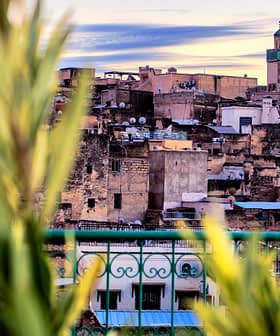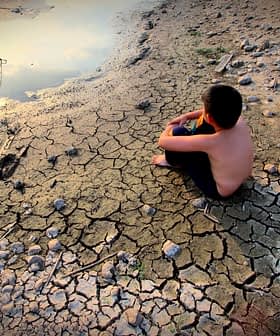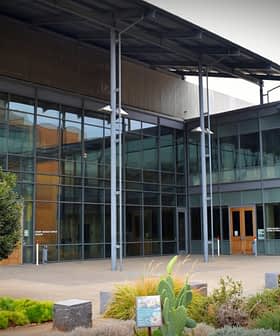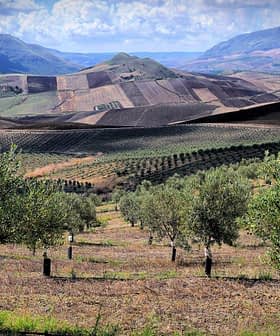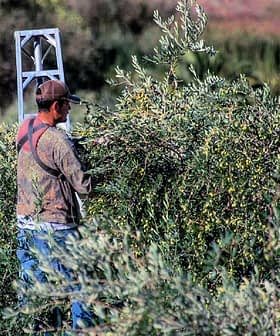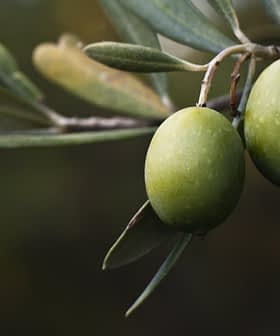Rain and Snow Across California Too Late for Slumping Olive Oil Production
While the significant snowfall means most of the state has escaped extreme drought, production is still expected to fall to a four-year low.
 Bakersfield, California
Bakersfield, California California’s olive farmers are relieved after receiving the largest snowfall since 1983, alleviating severe drought conditions in the state’s olive-growing regions. The recent abundance of precipitation has improved the short-term outlook for olive growers, although long-term drought recovery will require several above-average years of rainfall.
California’s olive farmers are sighing with relief after the state received its largest snowfall since 1983.
A series of snowstorms at the beginning of March blanketed a significant swatch of the Golden State – from Lake Tahoe in the north to the suburbs of Los Angeles – in one to three meters of snow.
According to the United States Drought Monitor, inland snow coupled with ample rain along the coasts means some of the state’s most fruitful olive-growing regions are no longer in a state of “severe” or “extreme” drought.
See Also:Awards for California Producers Validate High extra virgin olive oil Standards“The recent abundance of precipitation in the Sierra Nevada and throughout California has greatly reduced short-term drought conditions throughout the state,” Andrew Schwartz, the lead scientist and manager at the Central Sierra Snow Laboratory at the University of California-Berkeley, told Newsweek.
“However, a significant amount of groundwater recharge is still needed before the long-term drought can be considered over, and we will need several above-average years for that to happen,” he added.
Recent rain and snow may provide a reprieve for olive growers in the coming 2023/24 crop year after the worst drought conditions of the past 130 years affected olive development and fruition in spring 2022.
As a result, olive oil production in California, which is responsible for virtually all U.S. production, is expected to slip to a four-year low.
The effects of the drought compounded erratic climatic events in spring 2022 and some of the state’s producers entering an ‘off-year’ in the natural alternate bearing cycle of the olive tree.
Producers across the Golden State said warm weather in February 2022 resulted in many olive trees blossoming early, followed by a cold spring snap which damaged the blossoms and prevented fruit from forming.
While coastal growers were largely spared from this event, some reported tree damage from the high winds. In addition, many producers without irrigation saw their trees suffer the consequences of the persistent drought.
The Olive Oil Commission of California, which represents 90 percent of the state’s production, predicted that this year’s yield would fall to 1.8 million gallons in its preliminary estimate published in July.
While the OOCC has not published its final figures and did not respond to questions from Olive Oil Times about the 2022/23 crop year, producers across the state said the final yields would likely be lower.
Cliff Little, the president of Corto Olive, the second-largest olive oil producer in the U.S., said the erratic weather significantly affected some groves in the state while sparing others.
“Our growers in the north were more affected by the freeze in the spring that damaged the buds,” he told Olive Oil Times. “We didn’t have a very good fruit set this year. We saw that particularly in and around us in the Lodi-Stockton area.”
However, Little added that some of Corto Olive’s growers from the San Joaquin Valley, which runs through the state’s center, and parts of southern California were far less affected. “A little bit further south had really nice crops this year,” he said
“We got no rainfall before the harvest,” Little added. “All of our orchards are irrigated, so we have the benefit of being able to time irrigations a bit to prepare the olives on the trees for harvest and didn’t have any issues with moisture.”
While the drought was a significant problem across California, Little said the sparse rain that did fall complicated the start of the harvest in late October, forcing the team to start and stop sporadically to avoid damaging the trees.
Meanwhile, at the foot of the Sierra Nevada, Giulio Zavolta, co-owner of Olivaia Olive Estate in Lindsay, confirmed a lower harvest than usual.
“Last year [2021/22] was a low harvest year, and so we were hoping for a good year this year, but it didn’t turn out to be a good year,” he told Olive Oil Times. “We’ve done a little bit better than last year, but we’re probably at 40 percent of what we could have harvested.”
“In the spring, we got freakishly cold weather,” Zavolta added. “The trees had already bloomed, and it froze. In our case, we lost 25 to 30 percent of our bloom. Then, shortly after, we had temperatures above 100 ºF (more than 38 ºC). It wasn’t long, but still, that is a huge swing that can’t be good for any tree just starting and trying to set some olives.”
Zavolta believes the drought is partially responsible for the low harvests of the past few years. His traditional grove comprises 125-year-old trees. The fan jets he installed to irrigate them do not reach the entire root structure, so the trees also require rain which was scarce in his corner of California.
“In years past, we always used to benefit from the snowpack, but because that would replenish our groundwater,” he said.
This year’s above-average snowpack should restore some of Zavolta’s groundwater and allow him to pump more than he was able to in the past couple of years, which he hopes means the coming crop year will be more fruitful than the previous.
Despite the reprieve, California is expected to continue to become hotter and drier in the coming decades.
As a result, Zavolta believes the state’s olive oil sector will continue to transition toward modern olive groves, which are more water efficient. However, he hopes there will still be support for historic olive groves, including his own.
“I would hate to see all of that heritage being torn out of the ground to make room for modern acreage,” he said. “There’s a special place in the world for centennial trees. We have them, and we should be keeping them.”
Share this article



